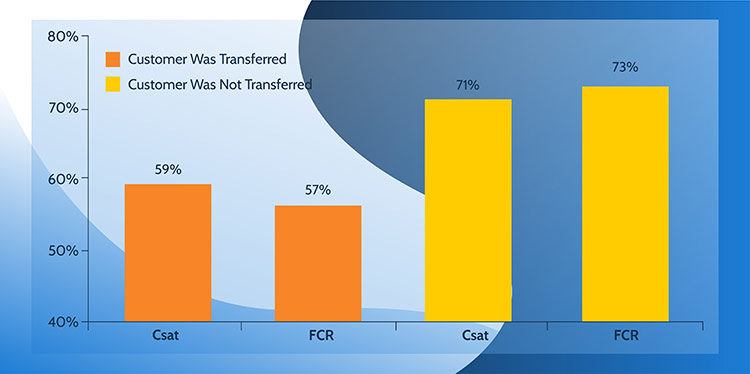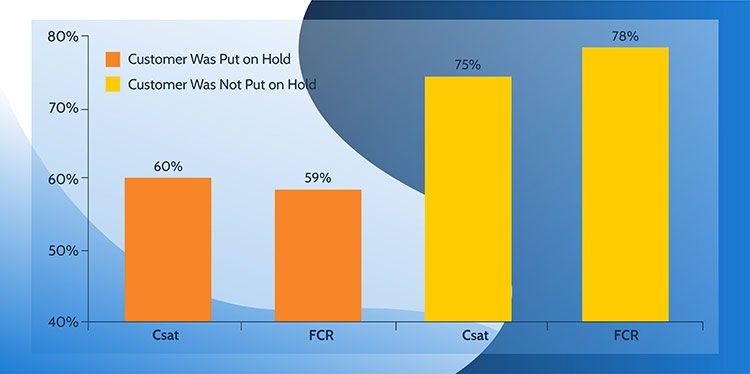Call Transfer and Hold Performance Impact on CX
SQM Group has been measuring, benchmarking, tracking, and helping leading North American call center's improve First Call Resolution (FCR) and customer service for over 25 years. In this blog, we share our call transfer and hold performance impact on customer satisfaction (Csat) and FCR research findings.
We evaluated call transfer and hold performance impact on Csat and the FCR rate with over 500 leading North American call centers annually using a Voice of the Customer (VoC) measuring and benchmarking approach. Our call center CX research findings are based on conducting telephone FCR post-contact transactional surveys using SQM's in-house telephone survey agents.
Many call centers are unaware of how their call transfer and hold performance impact Csat and FCR. Moreover, SQM Group's research revealed that when calls are transferred or put on hold, they can significantly impact Customer Experience (CX) for Csat and FCR.

It is important to note that SQM's research shows that 19% of customers who call a call center are transferred to another agent. Figure 1 shows that when a customer is transferred, Csat (top box response rating) is 12% lower, and FCR is 14% lower than when a customer is not transferred. The main reason why customers are transferred to another agent is that the IVR voice menu system did not route the customer to the right agent in the first place, or the agent's knowledge, skills, and abilities are poor.
Furthermore, how a customer is transferred also affects Csat and FCR. SQM's research shows that for customers who were warm transferred instead of cold transferred, FCR and Csat are significantly higher. Customers appreciate a warm transfer because they do not have to repeat their information to the new agent. However, what further enhances the CX is when there is no wait time to reach the appropriate agent. But what customers really want is the agent that they first speak with to handle their call without a transfer.
Figure 1. Transfer of Calls Impact on Csat & FCR Comparison

SQM's research shows that 46% of customers are put on hold when talking to an agent.
Figure 2 shows a significant difference in Csat and FCR for customers put on hold compared to customers not put on hold. When customers are put on hold, Csat (top box response) is 15% lower, and FCR is 19% lower than when customers are not put on hold.
Most customers put on hold are told that they are being put on hold; the hold time is typically between 30 seconds and five minutes. In addition, when customers are put on hold, in many cases, there is music in the background or advertising; both business practices can create customer dissatisfaction.
Customers prefer a live hold practice, meaning that the customer can talk to the agent at any time versus being put on mute and not speaking to the agent. Another important finding from SQM's research around live hold is that average handle time is shorter with a live hold versus a mute hold. The main reason is that the agent has more urgency to resolve the call when the live hold business practice is being used.
Figure 2. Put on Hold Impact on Csat & FCR Comparison

Quick Related Links
First Call Resolution Definition First Call Resolution PPT First Call Resolution Benefits FCR Case Study Survey Data Call Handling Motto with Muscle VoC Closed-Loop Top 10 CX Metrics Agent Call Handling Call Handling Best Practices

